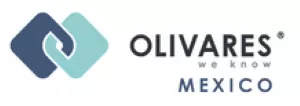The decree published in the Official Gazette of the Federation on Sept. 19, 2003, added section IV of article 167 and article 167 bis of the Health Supplies Regulation were added, as well as article 47 bis of the Industrial Property Law Regulation. As a result, a mechanism for preventing violation of patent rights, known as the linkage system, was established in Mexico between the Federal Commission for the Protection Against Sanitary Risks (COFEPRIS), in charge, among other issues of a regulatory nature, of granting marketing authorizations for allopathic medicines, and the Mexican Institute of Industrial Property (IMPI), which is responsible for protecting industrial property rights through the granting of patents, through the publication in the gazette by the IMPI of patents in force for allopathic medicines that must be observed by COFEPRIS. As such, prior to granting a marketing authorization and taking into consideration the technical opinion issued by the IMPI, it is ensured that the authorization for a medicine is not granted to a person who is not the owner or licensee of the patent that claims exclusive exploitation of the medicine and therefore no patent rights are infringed.
The Industrial Property Law was repealed by the Federal Law for the Protection of Industrial Property, which came into force on Nov. 5, 2020, in which the obligation by IMPI to publish every six months a list of patents related to inventions that may be used in allopathic medicines was included in article 162, second paragraph.
Likewise, as of the date this article was written, the federal executive had not issued the Regulations of the Law, so that the Regulation published in the Official Gazette of the Federation on Nov. 23, 1994 remains in force, and therefore, article 47 bis mentioned above remains valid.
The publicity function of the linking system is to safeguard the industrial property rights of patent holders through an effective mechanism of cooperation and communication between two different authorities, IMPI and COFEPRIS. This also confers legal certainty to all interested parties, who can
find out through the semiannual publication of the gazette whether or not they can access the granting of a marketing authorization for a generic medicine because there is a valid patent. They can also know the moment in which an application for a marketing authorization can be submitted and the clinical tests and analyses referred to in the applicable health laws and official regulations can be carried out, which contains the so-called Roche-Bolar exception, so that interested parties can provide to the health authorities the information related to their authorization.
It is necessary to highlight that the new Federal Law on the Protection of Industrial Property contains in its article 57, section II, an exception to the right conferred by the patent and that allows third parties to use, manufacture, offer for sale or import a product with a valid patent, exclusively to generate tests, information and experimental production necessary to obtain marketing authorizations of medicines, without any temporality.
This exception clearly contrasts with the Roche Bolar exception provided for in articles 177 bis2 and 167 bis of the Health Supplies Regulation, which establish the right of interested parties to provide health authorities with information related to their authorization, within three and eight years depending on the type of patent (chemical synthesis and/or biological) prior to the expiration of the patent and which, in my opinion, causes uncertainty for patent holders because the lack of temporality to obtain an authorization facilitates the invasion of patent rights in the absence of strict regulation that allows confirming and verifying said purpose.
Without a doubt, the linking system constitutes a great advance in the prevention of invasion of patent rights that protect pharmaceutical products and has been in force in Mexico for 20 years, during which our courts have issued criteria to improve its application by health authorities, because patents are published that protect active ingredients and their crystalline forms, pharmaceutical compositions or formulations and medical uses, although the latter through litigation.
On the other hand, the positive criteria issued by our administrative courts have allowed us to improve the effectiveness of this legal mechanism for preventing invasion of rights, not only with respect to patents that protect active ingredients, but also patents that protect pharmaceutical formulations and compositions, given that it took more than 10 years for IMPI to publish the latter patents in the gazette without restrictions and more than 13 years for COFEPRIS to consider them as part of the standard.
There are still some pending issues that will allow us to build a better legal system for the benefit of all industry participants, such as the reluctance of IMPI and COFEPRIS to apply the linkage system regarding patents for medical use of known compounds, that should not wait for a court order, since in my opinion the same reasoning should be applied to this category of patents in accordance with the jurisprudence due to contradiction of thesis No. 2ª./J.7/2010 supported by the Second Chamber of the Supreme Court of Justice for the listing of pharmaceutical formulation and/or composition patents.
Likewise, with the signing by the members of the Trans-Pacific Partnership Treaty, we see a window of opportunity in Mexico as part of said agreement to give clarity to the linkage system through a reform to the articles that compose it, especially to the first paragraph of article 167 bis of the Health Supplies Regulation, which we have analyzed, in which “patents for allopathic medicines” must be added instead of “patents for the active substance or ingredient” in order to avoid wrong and exclusive interpretations.
Finally, as the Regulation of the Federal Law for the Protection of Industrial Property is pending, it will be necessary to implement this collaboration and technical cooperation mechanism referred to in the Annex to article 20.51 1 of the treaty between Mexico, the United States and Canada (USMCA) in order to grant the right of hearing to the owner or licensee of the patent.
Originally Published by MEXICO BUSINESS NEWS
The content of this article is intended to provide a general guide to the subject matter. Specialist advice should be sought about your specific circumstances.

